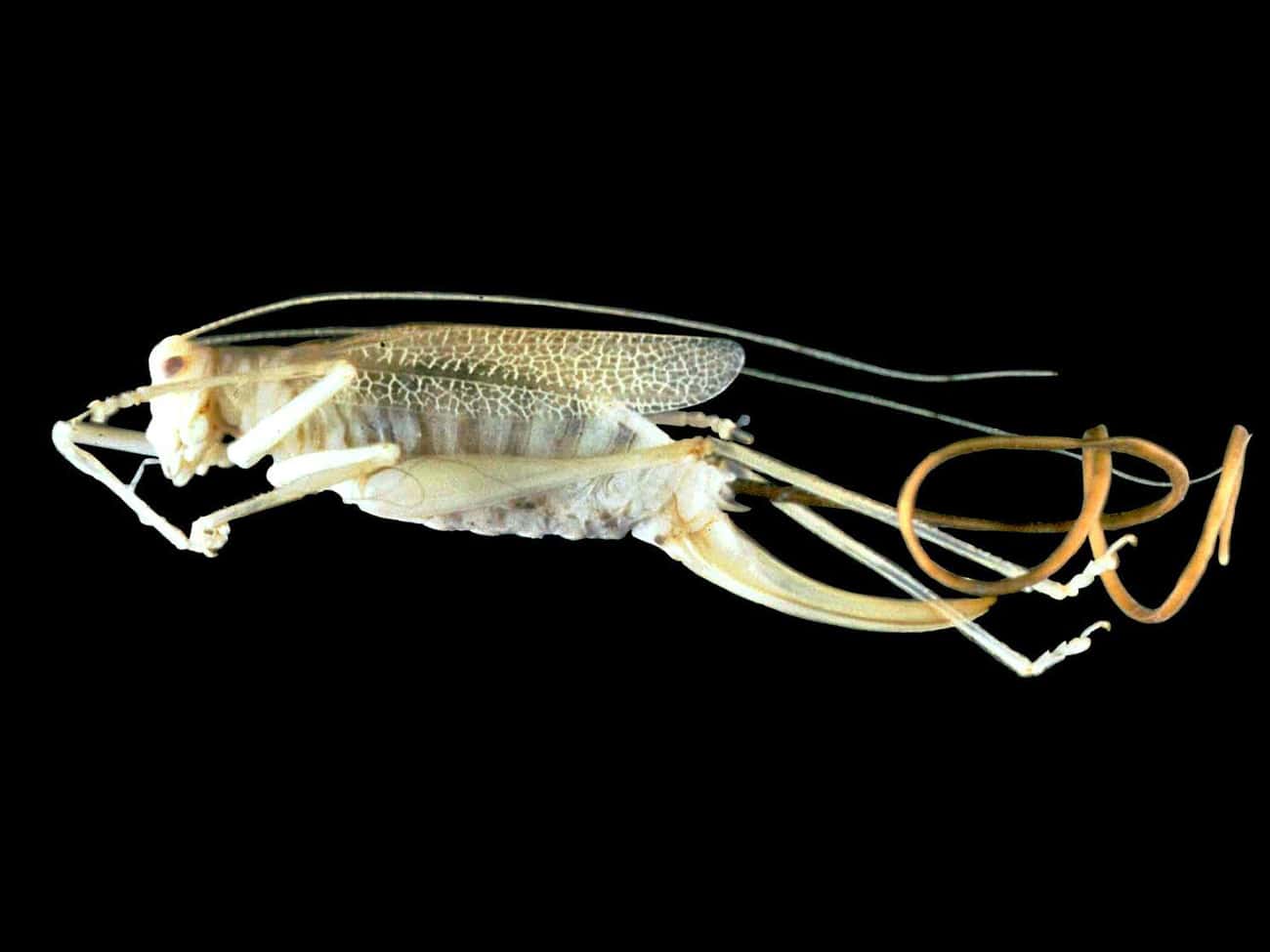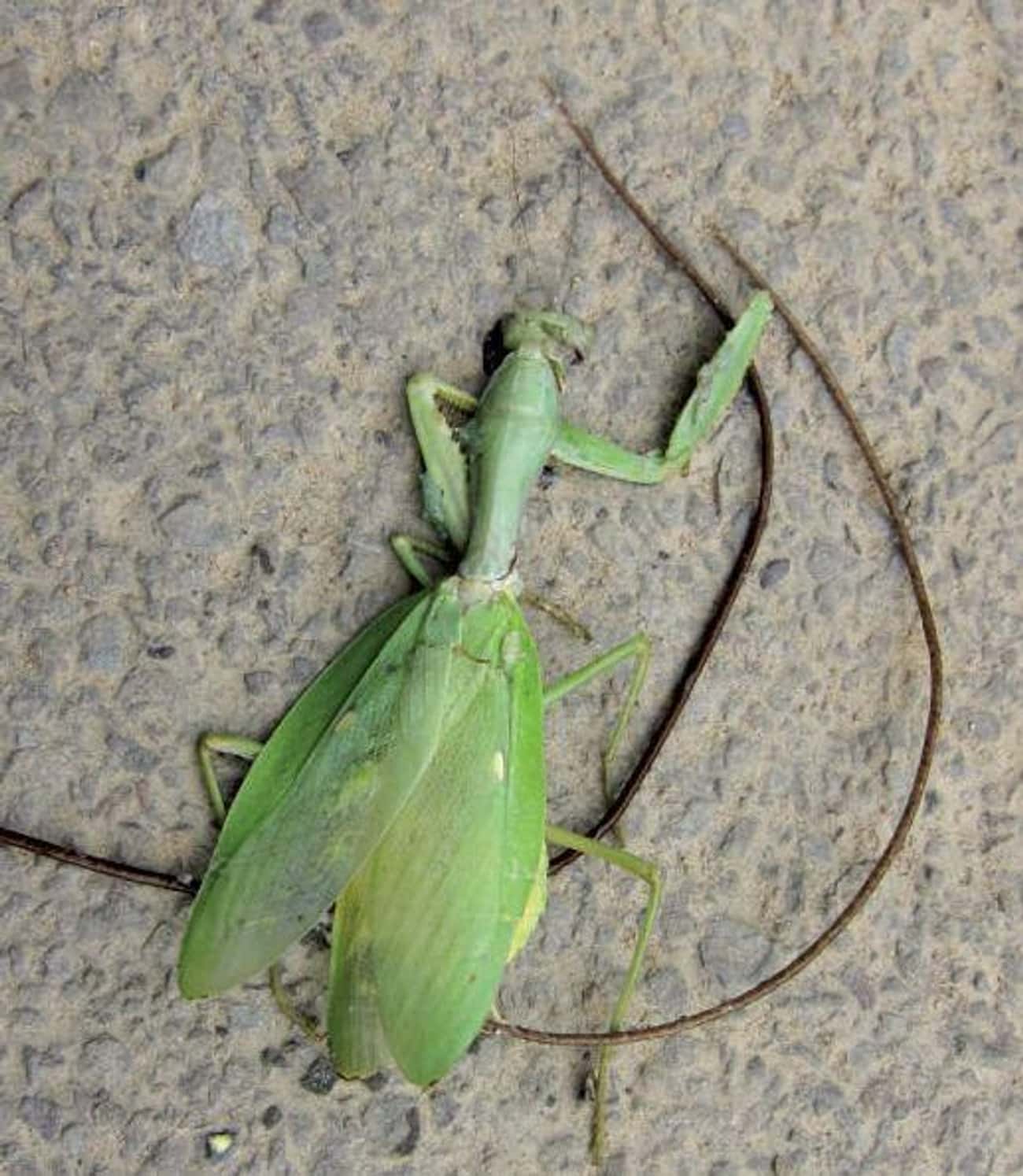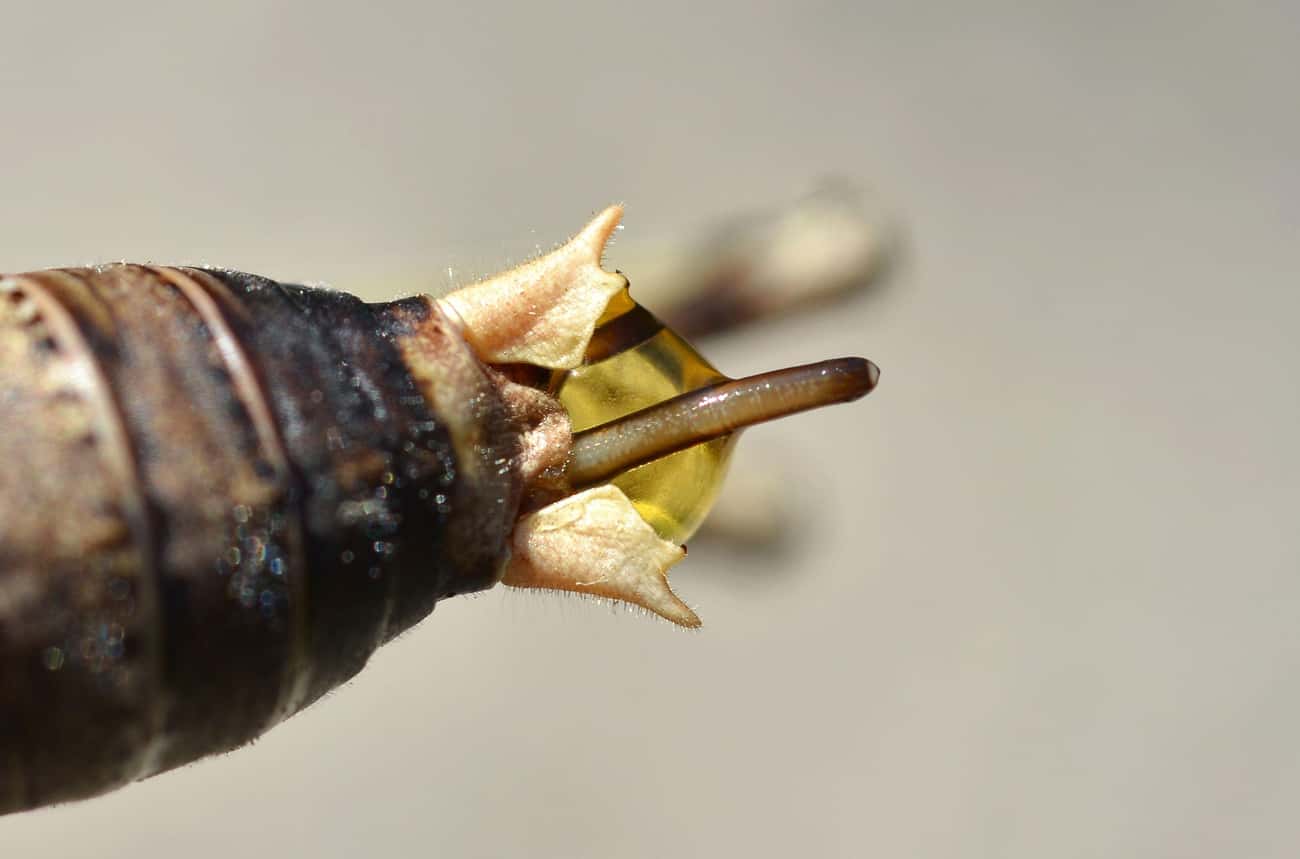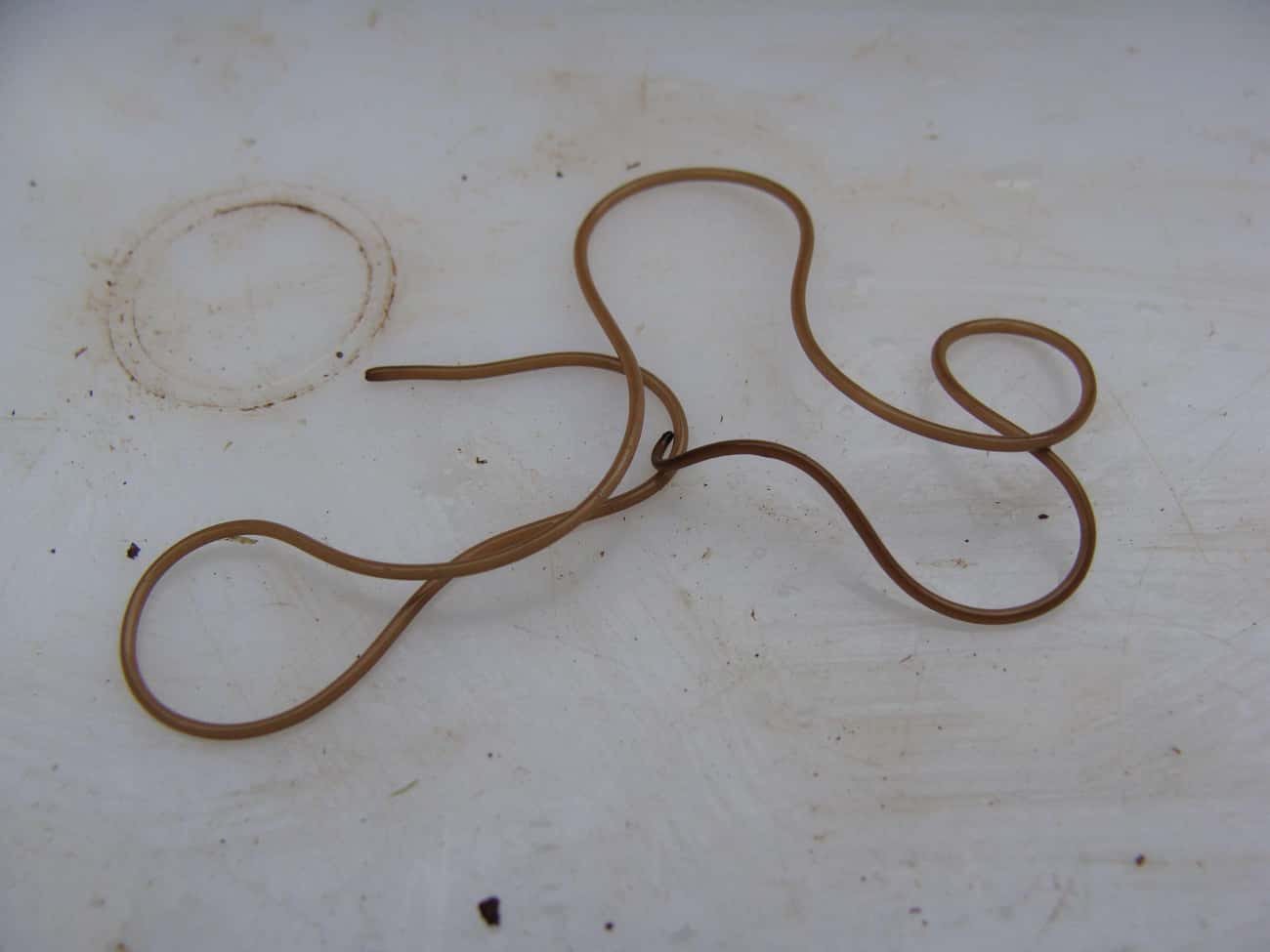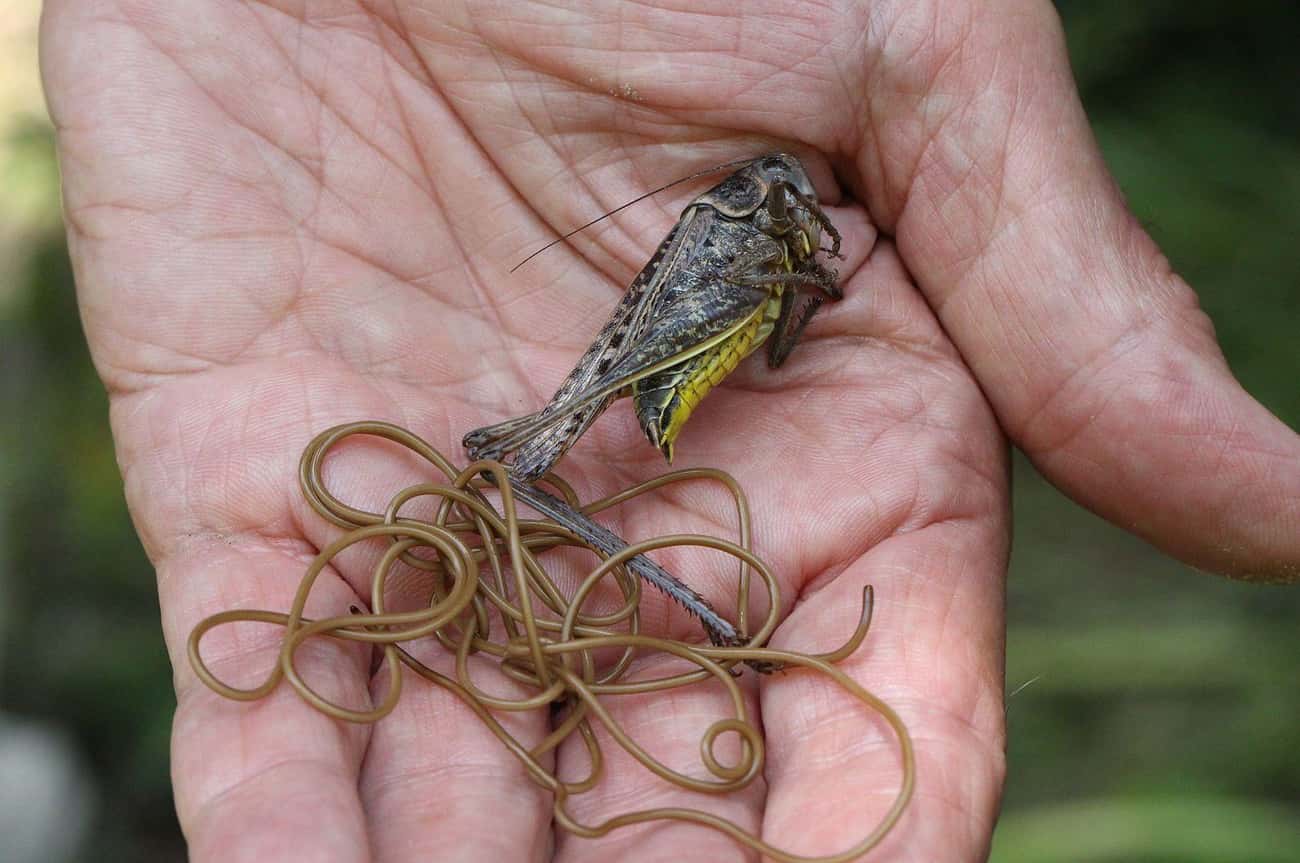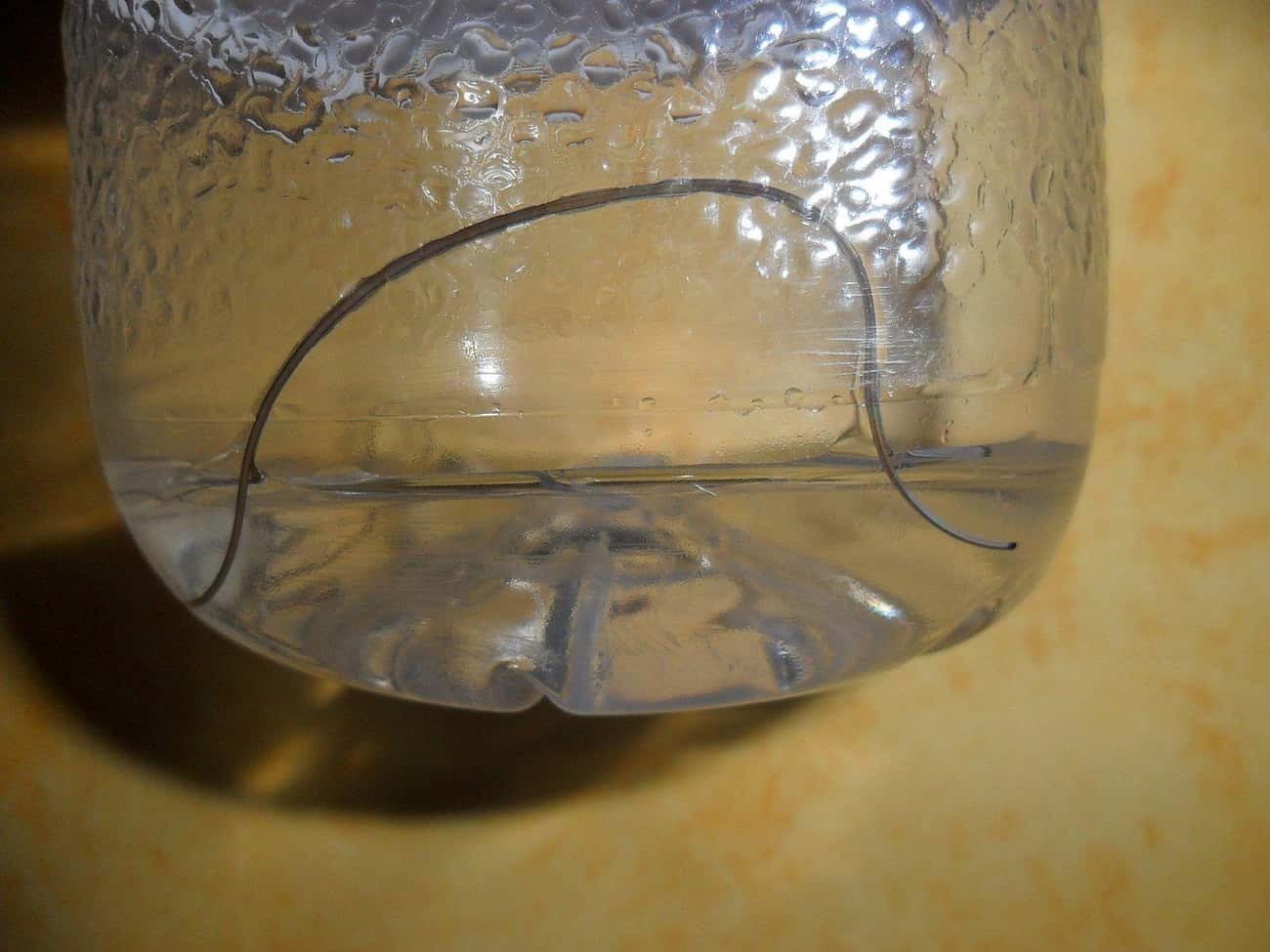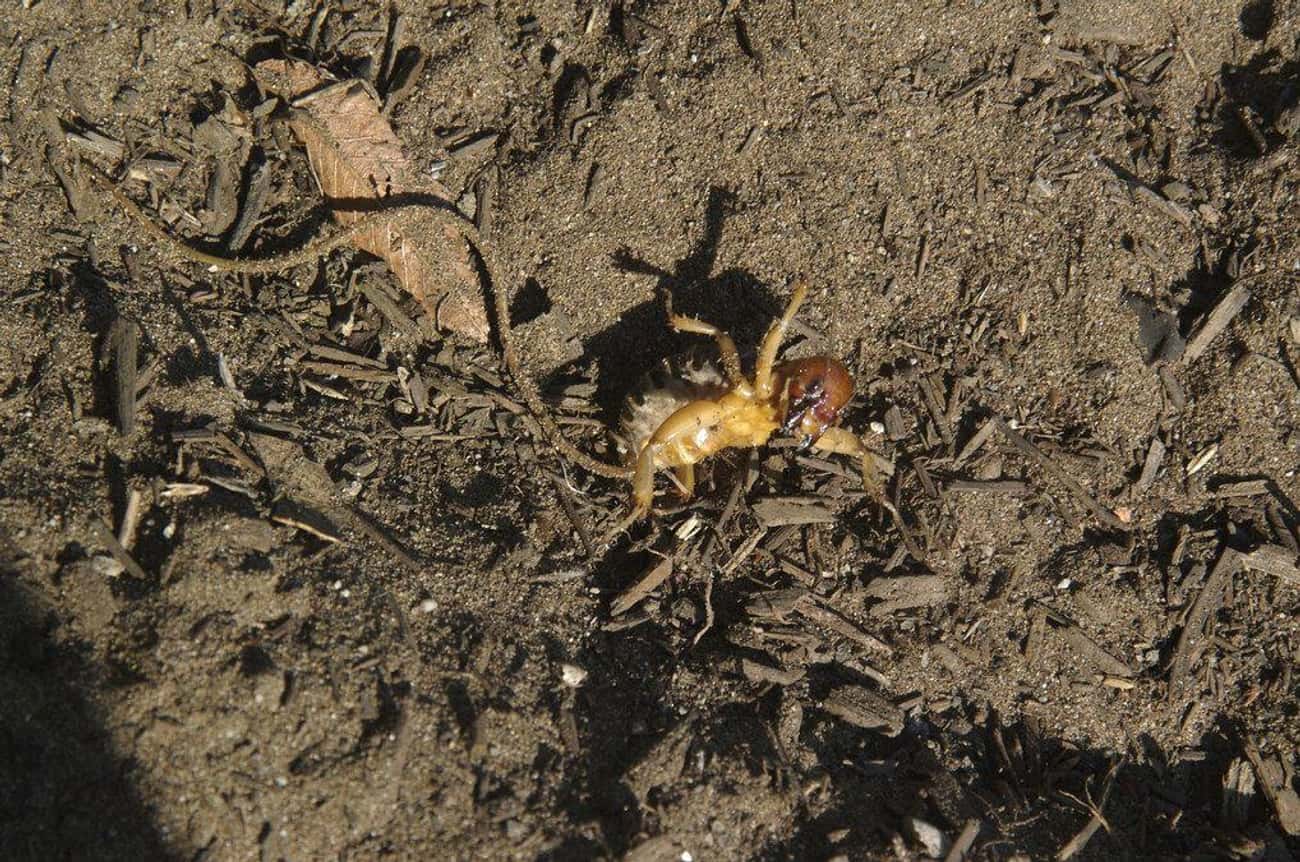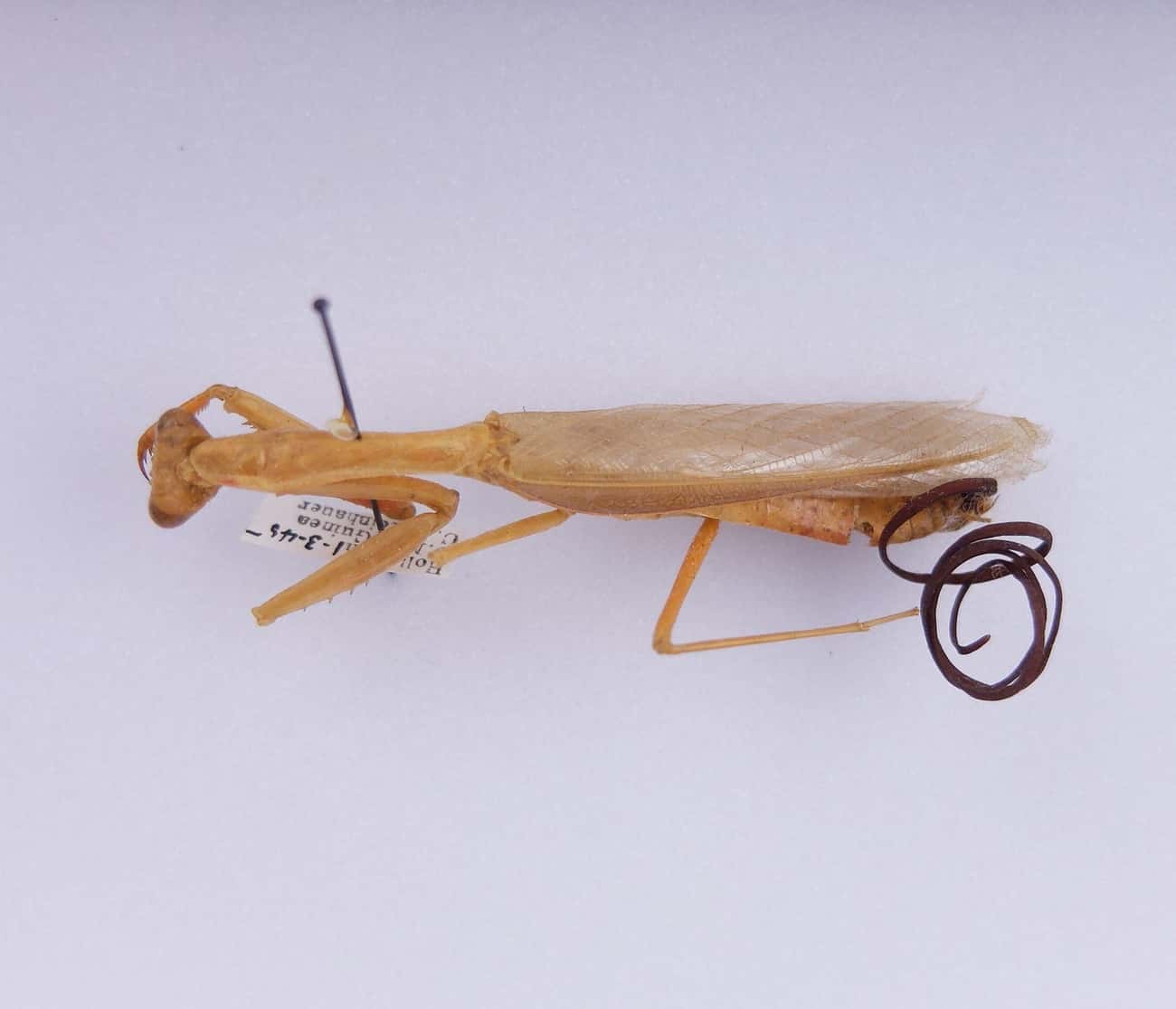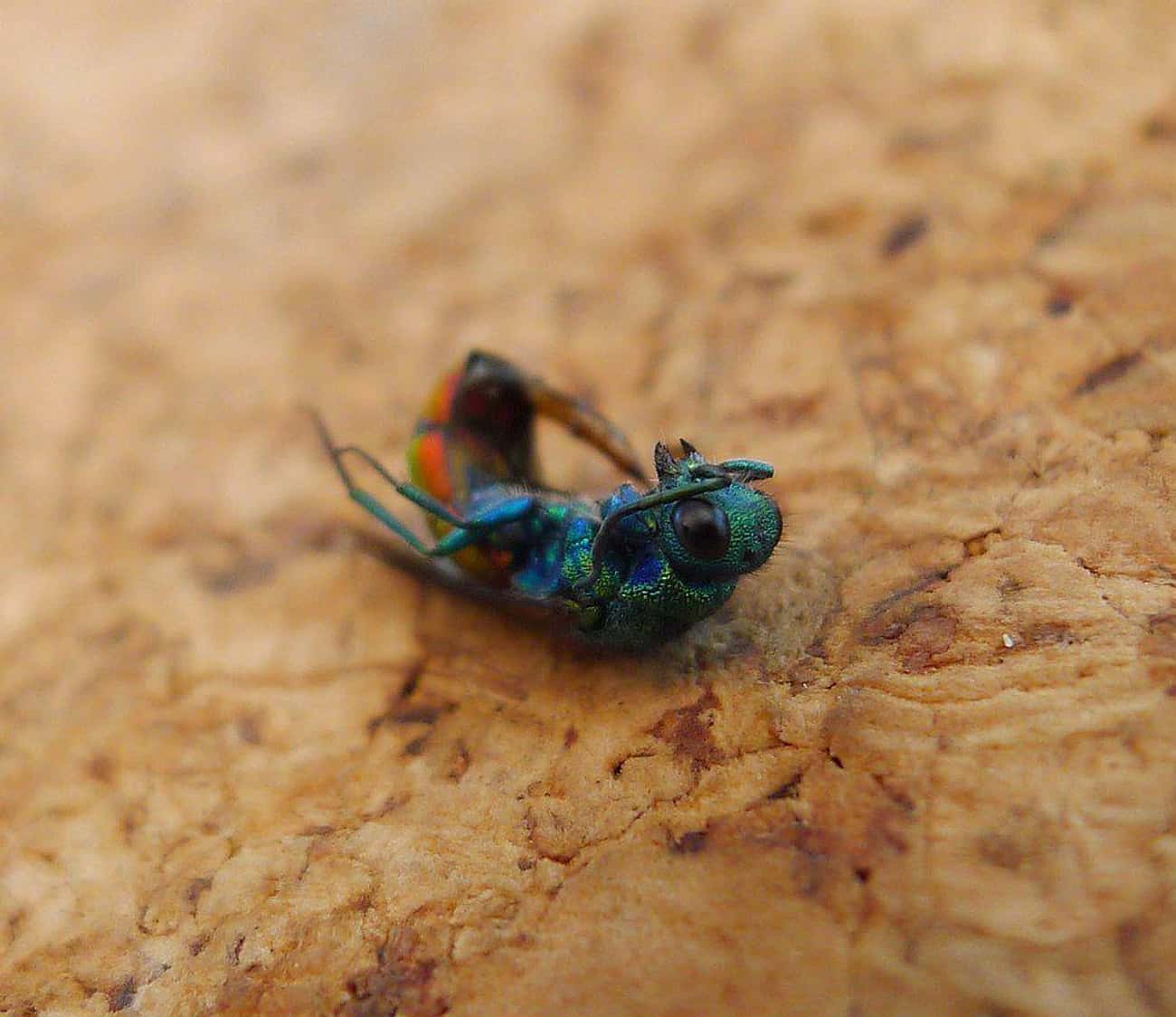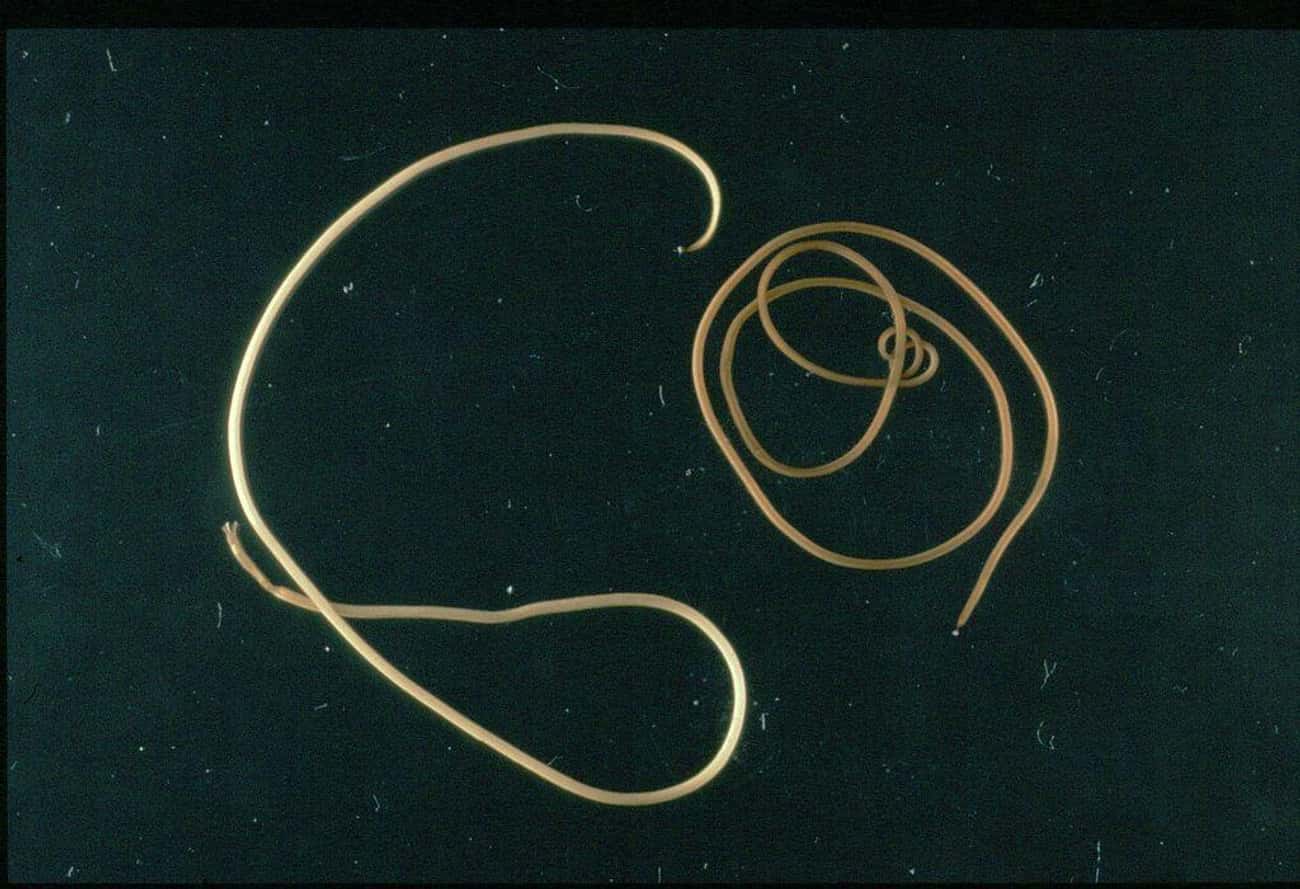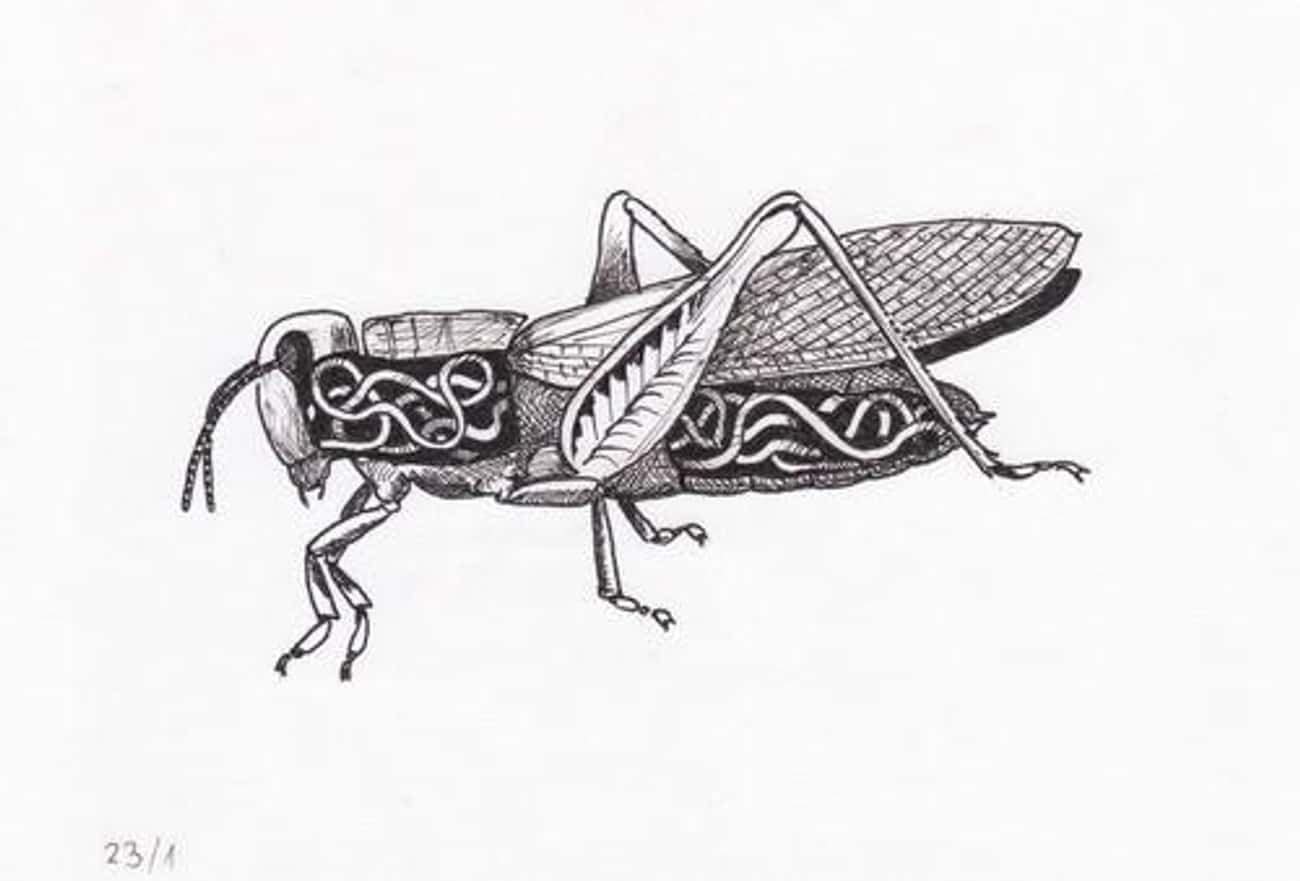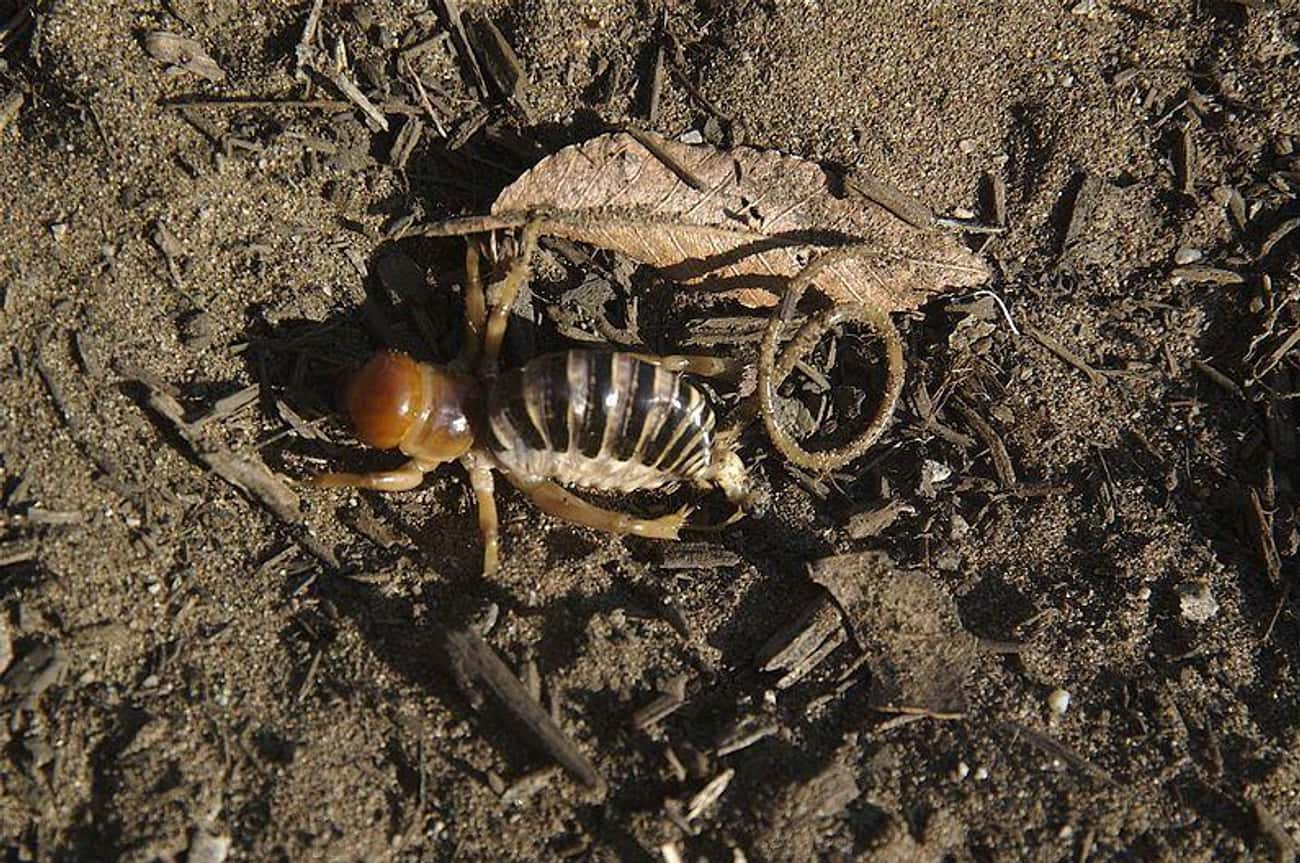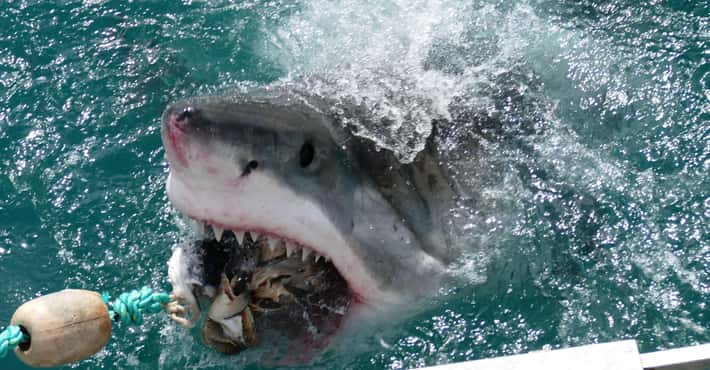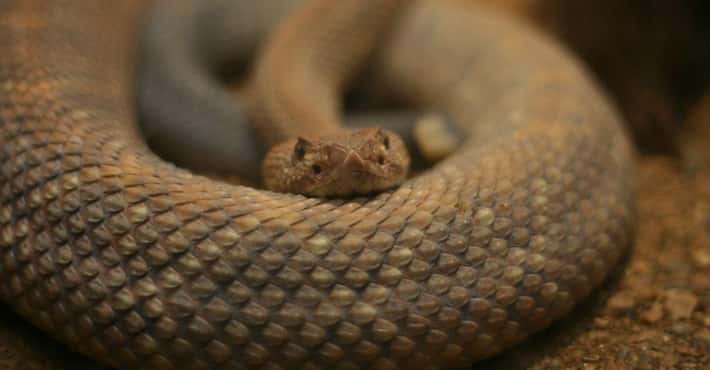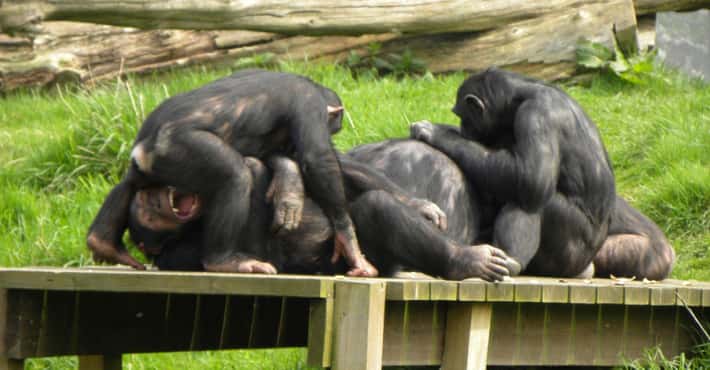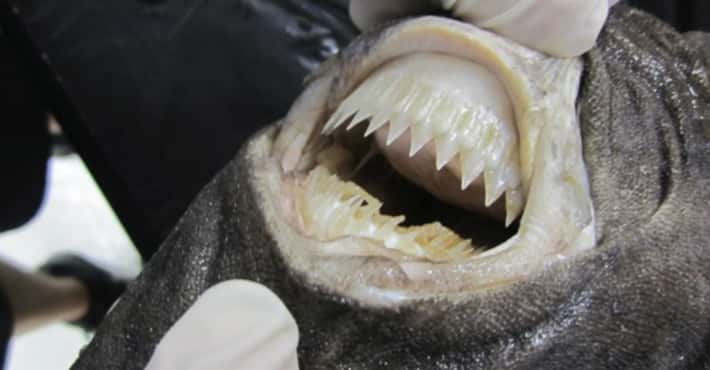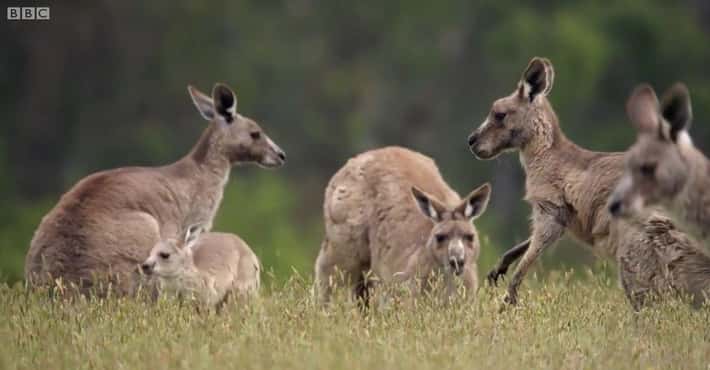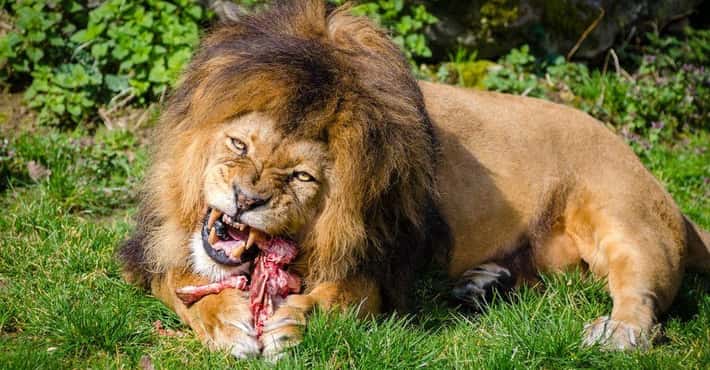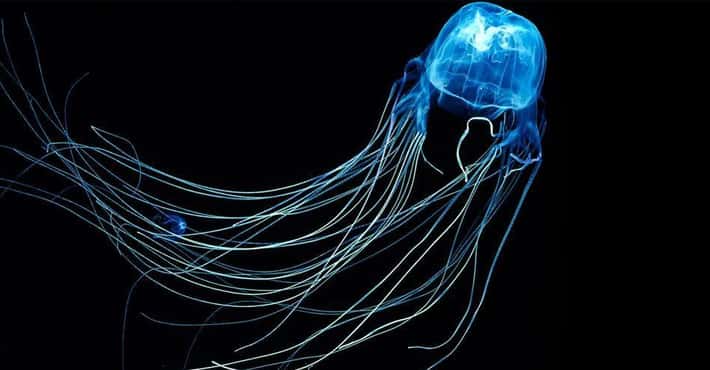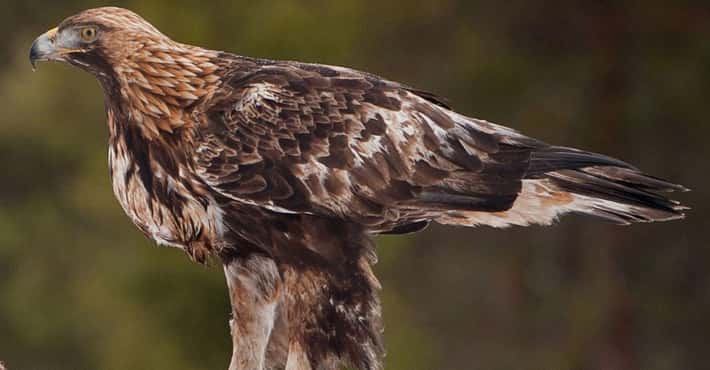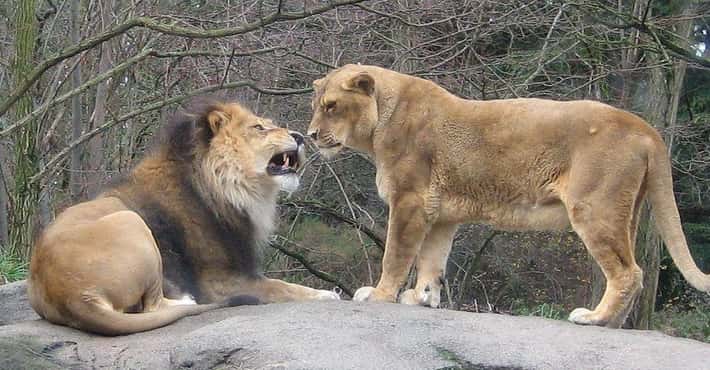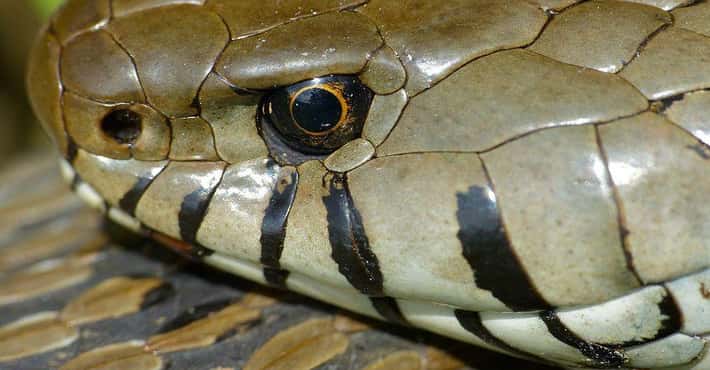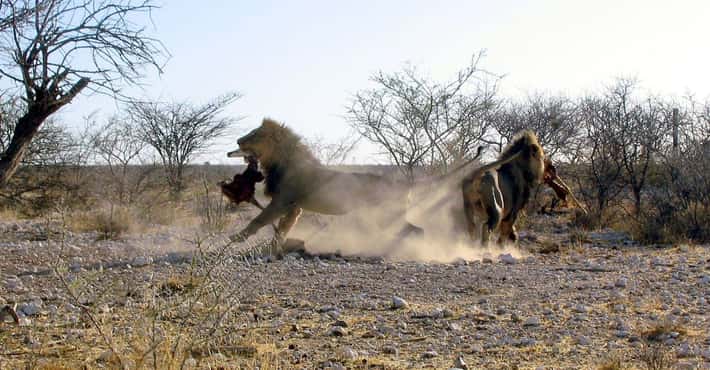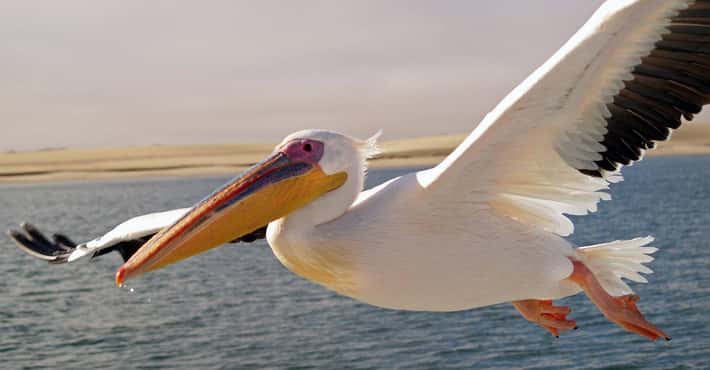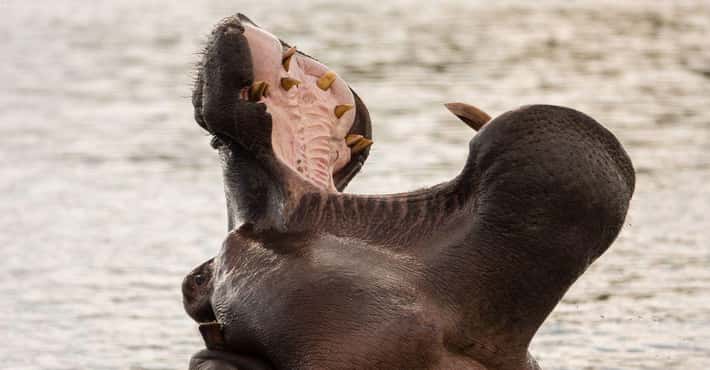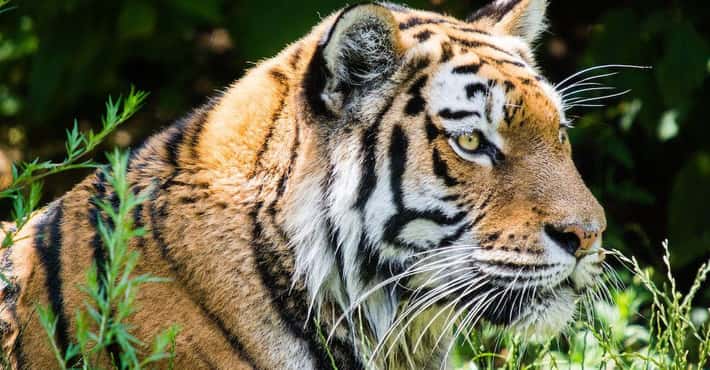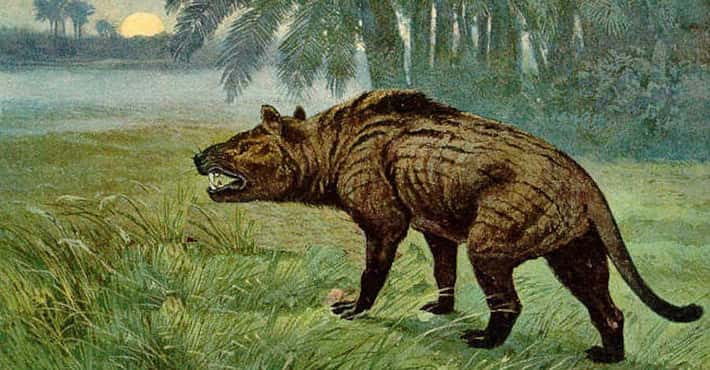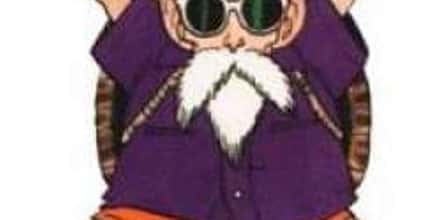Horsehair Worms Are Real, Horrifying Parasites, And They've Evolved To Attack Humanity
This Video Of 3 Horsehair Worms Emerging From A Praying Mantis Is The Most Scarring Thing On The Internet
Video: YouTube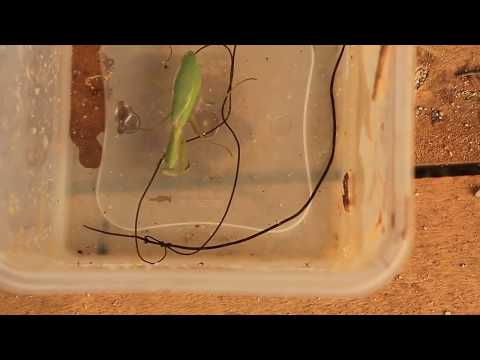
Their Lives Are Like Something Out Of A Twisted Sci-Fi Movie
Photo: Dr. Andreas Schmidt-Rhaesa / Wikimedia Commons / CC BY-SA 3.0Horsehair worms have a complicated and unsettling life cycle that plays out like a rejected movie script from the Alien franchise. Each one starts off as an egg, just one of 15 million laid by the mother. Once hatched, getting eaten becomes a worm's top priority so that they can start their parasitic life.
Some species choose hosts that are likely to become food for even larger insects, allowing them to infect the largest possible host.
A Sort Of Mind Control Allows The Worms To 'Zombify' Their Hosts And Drive Them To Take Their Own Lives
Photo: Dr. Andreas Schmidt-Rhaesa / Wikimedia Commons / CC BY 3.0A critical part of every horsehair worm's life is their eventual emergence from the host body but they can't emerge just anywhere. Because these worms are aquatic animals and need water to lay their eggs, they've developed an adaptation that allows them to take over their host's mind. It might sound like science fiction, but horsehair worms essentially "zombify" their hosts and force them to seek out water. Creatures that struggle to survive underwater will willingly throw themselves into the nearest creek, pond, or puddle at the command of the parasite.
The worms achieve this mind control effect by pumping brain-altering chemicals known as neurotransmitters into their victim.
Infected Creatures May Cannonball Involuntarily Into A Nearby Water Source
Photo: Elizabeth Nicodemus / Flickr / CC BY-SA 2.0It's almost impossible to tell on sight whether an animal or insect is playing host to a horsehair worm... unless the animal gets close to water. Then the animal will almost cannonball into the water source, prompted by the parasites that have infected its brain.
The survival rate of hosts often depends on whether they can swim or not: After dispensing their worms they're left on their own.
They Have No Mouths, So Scientists Don't Know How They Chew Through Their Hosts
Photo: Gilles San Martin / Wikimedia Commons / CC BY-SA 2.0Since these parasites lack basic bodily features, like a mouth, scientists still can't positively explain the horsehair worm's lifecycle. No one knows exactly how they manage to bore through the carapaces of their victims, but it's obvious they're not chewing their way out.
It's possible that these muscular worms simply force their way by pushing as hard as they can, but it's difficult to say.
A Horsehair Worm's Entire Body Is Just One Big Mating Organ
Photo: Eduard Solà Vázquez / Wikimedia Commons / CC BY 3.0Perhaps most disturbingly, the primary goals of these worms involve mating and breeding. Their entire evolutionary history revolves around their subsequent sex lives. As such, it is less of a surprise that these parasites die shortly after the reproductive process.
The horsehair worm looks underwhelming apart from its great length, being primarily just a tube of muscles and genitals with no real defining features. They're pretty nondescript internally as well, lacking most organs familiar to humans. Worms like these don't have brains or even digestive tracts to speak of and their sole way to absorb energy is to cling to a host's digestive system and leech nutrients directly through the skin.
Horsehair Worms Are Disturbingly Large
Photo: Dr. Andreas Schmidt-Rhaesa / Wikimedia Commons / CC BY-SA 3.0On average, a horsehair worm can grow about a foot in length, much longer than a host's entire body. They can even weigh as much as the host itself, prompting scientists to question how an infected insect can manage to function somewhat normally while under siege.
There are even species of the Nematomorpha family that grow up to seven feet in length. So yeah, have fun trying to sleep tonight.
An Astonishing Amount Of Worms Can Fit In A Single Host
Photo: Alastair Rae / Wikimedia Commons / CC BY-SA 2.0If you think a foot-long worm living in your digestive system might cause some complications, try fitting 32 of them in there. That's right, the record for the most horsehair worms inside a single host is nearly three dozen. Remember, these are giant worms living inside tiny insects.
It seems impossible that so many worms could fit inside one bug, but that's the horrifying truth of it. Horsehair worm infestations can be so dense that they are regularly found tangled up in knots. Picture a rat king made up of only the tails.
Humans Aren't Safe From These Things Either
Photo: Totodu74 / Wikimedia Commons / CC BY-SA 2.0There's good news and bad news regarding horsehair worms and humans. The bad news is that there have been documented cases of horsehair worms infecting humans hosts. The silver lining, though, is that this freaky worm variety has spent an entire evolutionary history adapting to target invertebrates. Cases in humans, then, are much less common and much less severe. Most infections occur after a human inadvertently eats a bug already infected by the parasite.
While horsehair worms can easily grow to maturity inside insect hosts, human bodies are good at expelling the worms almost immediately. Several such instances in Japan were studied and it was concluded that most human victims either regurgitate or poop out the worms fairly quickly. Additionally, there is no evidence that any of the neurological paralysis will affect the human psyche.
So as of yet, there will be no zombie apocalypse, at least not because of horsehair worms.
They're Survivors
No horrifying alien parasite would be properly disturbing if it wasn't frustratingly durable. Horsehair worms are extremely hardy survivors, able to withstand conditions that would mean death for most animals.
Their tough skin is able to withstand the entire digestive tract of many creatures, including humans, despite stomach acid and other corrosive fluids.
Horsehair Worms Are Actually Related To A Ton Of Other Parasites
Video: YouTube
Horsehair worms belong to the taxonomic phylum known as Nematomorpha, a group that is represented by as many as 2,000 different species. They can be found on every continent except Antarctica, living in the waterways and infecting local insects and other arthropods.
For the most part, all species of Nematomorpha are aquatic or semi-aquatic and they are not known to have much interest in vertebrate hosts.
The Cordyceps Fungus Also Zombifies Host Ants
Unfortunately for the creatures of Earth, there is more than one type of mind-altering parasite of which to be wary. There is a genus of fungus known as Cordyceps that is infamous for taking over the minds of ants and forcing them to take their own lives.
The fungus does this by sending the ants to a visible location where they can be seen and eaten by predators like birds, which then spread fungal spores through their fecal matter.
Jewel Wasps Also Control Their Host Insects
Photo: gailhampshire / Wikimedia Commons / CC BY 2.0There is also a species of wasp, the jewel wasp, that specializes in tormenting cockroaches in a most ghastly way. They use their stingers to inject venom directly into the normally resilient cockroaches who then become the wasps' slaves.
The jewel wasp will also lay her eggs inside the cockroach. The eggs remain dormant until they hatch and the larvae eat their way out of the poor creature's body.
The Host Sometimes Survives After Dispensing Its Horsehair Worm
Photo: Dr. Andreas Schmidt-Rhaesa / Wikimedia Commons / CC BY-SA 3.0If a creature that has been inhabited by a horsehair worm is lucky enough to rid itself from the parasite without drowning or losing all of its fat and body to the worm, the now-free host can still go on to produce offspring and live a life free from its parasite.
Horsehair Worms Are Named After An Ancient Myth
Photo: Jean-Simon Berthélemy / Wikimedia Commons / Public DomainHorsehair worms belong to the class Nematomorpha which are also called Gordian worms, a nod to the ancient myth of the Gordian knot. As legend has it, when Alexander the Great marched into the Phrygian capital of Gordium, in what's now Turkey, his army found a giant rope knot puzzle which had supposedly belonged to the father of King Midas. According to History.com, "An oracle had declared that any man who could unravel its elaborate knots was destined to become ruler of all of Asia." Alexander was eager to attempt the challenge, but true to his character became quickly frustrated and pulled out his sword to slice through the knot. His army then conquered much of Asia.
Now, these diabolical little knotty parasites take on the name of one of mythology's most legendary stories, and their mysterious neurotransmitters are their own tangled puzzle themselves. But in colloquial naming, these worms tend to stick to their nickname, which probably better fits their aesthetic, anyway.
The Parasites Don't Have Many Abilities
Photo: Márton Zsoldos / Wikimedia Commons / CC BY-SA 3.0Part of why horsehair worms have evolved to take over living organisms' minds is that these things have no real minds or abilities of their own and need to leach off other creatures to survive. They often inhabit lakebeds, where larvae lie waiting for an unsuspecting host to come along.
Parasitologist Ben Hanelt told Wired they're quite common in the New Mexico deserts that surround where he lives. He described seeing "a dinner-plate-sized puddle" where tons of worms were squirming around. “When I look around, I see very few resources,” he said. “So, if I was a worm, the best way to make a living out here is to get into a very nutritious insect host, which is filled with fat. This represents the easy life.”
Horsehair Worms Only Stay In The Host To Grow And Absorb Nutrients
Photo: Jerry Kirkhart / Wikimedia Commons / CC BY 2.0After finding the perfect insect to infect, the horsehair worm parasite begins to grow exponentially. The creature may fit neatly inside a tiny host insect, but it can actually be larger than the host, absorbing nutrients.
When the parasite is fully matured and ready to reproduce, it forces the host to seek out a body of water. Once submerged, the parasitic worm bursts forth from the victim in frantic search of a mate.


